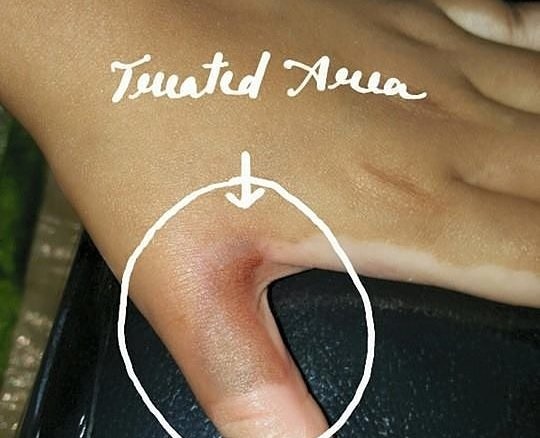Living with vitiligo can be very difficult in today’s social media obsessed world. Since youngsters with vitiligo often experience the fear of being socially rejected, they seek different options like camouflage make-up and/or tattoo to cover their vitiligo, as much as possible.
Tattooing on vitiligo patches is a semi-permanent makeup procedure that lasts up to 3 years and can be safely performed on the face, hands, and body, given it is done by a certified, experienced professional.
How are white patches tattooed?
To complete the procedure, colors (pigment) are custom blended to match the vitiligo fighter’s skin tone. Each pigment is deposited into the white areas of the skin using equipment that holds a single acupuncture needle to reach the dermal layers of the skin. To ensure safety, non-toxic natural mineral-based pigments should be used for the procedure.
Sometimes, multiple sessions are needed in order to seamlessly match the color as some of the pigment exfoliates after each session. Usually, it takes about four weeks for the color to completely settle in the skin.
Micropigmentation for vitiligo
The most popular tattooing technique, developed especially for covering vitiligo, is Micropigmentation. Sometimes called ‘permanent cosmetics, Micropigmentation involves implanting small particles of natural pigment under the skin similar to a tattoo.
To achieve best results, minute, metabolically inert pigment granules are implanted below the epidermis in less than two hours. To help blend the affected area with the rest of the skin, the procedure is performed under local anesthesia. The results are seen around four to six weeks post the procedure.
One may expect swelling in the treated area that can be treated with ice packs and ointments. Possible risks of Micropigmentation remain infection, removal problems, allergic reactions, inflammation, keloid formation, and MRI complications.
Tattooing Vitiligo and its downsides
Tattooing a vitiligo patch is often considered a temporary solution. If vitiligo is in the active phase, the patches may spread beyond the tattoo. Secondly, it is often extremely difficult to match the color of the skin with tattoo ink as our skin color changes with the seasons, sun exposure, and age. Also, the tattoo ink looks very different once it settles into the depigmented skin. This could be one of the reasons why tattooing is only recommended to people with segmental vitiligo.
Hence, it is highly recommended to consult a skin specialist and understand the stability of vitiligo symptoms before getting the white spot(s) tattooed.

